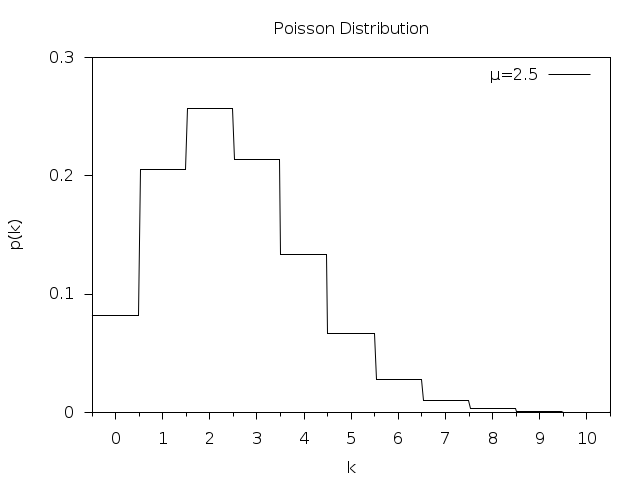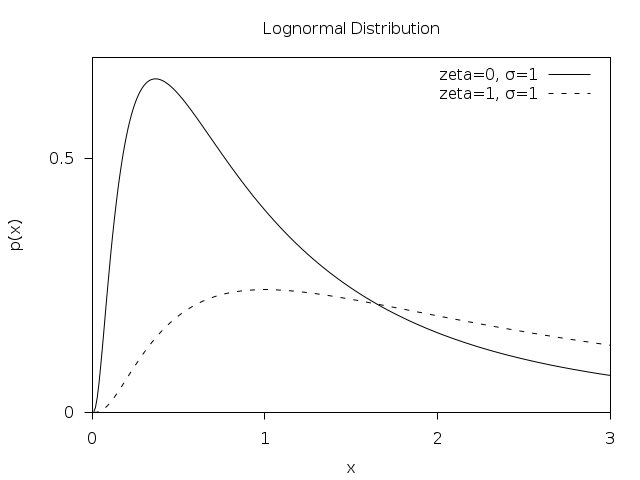This post has moved to eklausmeier.goip.de/blog/2021/02-09-poisson-log-normal-distributed-random-numbers.
Task at hand: Generate random numbers which follow a lognormal distribution, but this drawing is governed by a Poisson distribution. I.e., the Poisson distribution governs how many lognormal random values are drawn. Input to the program are of the Poisson distribution, modal value and either 95% or 99% percentile of the lognormal distribution.
From Wikipedia’s entry on Log-normal distribution we find the formula for the quantile for the
-percentage of the percentile
, given mean
and standard deviation
:
and the modal value as
So if and
are given, we can compute
and
:
and is the solution of the quadratic equation:
hence
or more simple
with
For quantiles 95% and 99% one gets as 1.64485362695147 and 2.32634787404084 respectively. For computing the inverse error function I used erfinv.c from lakshayg.
Actual generation of random numbers according Poisson- and lognormal-distribution is done using GSL. My program is here: gslSoris.c.
Poisson distribution looks like this (from GSL documentation):

Lognormal distribution looks like this (from GSL):




You must be logged in to post a comment.